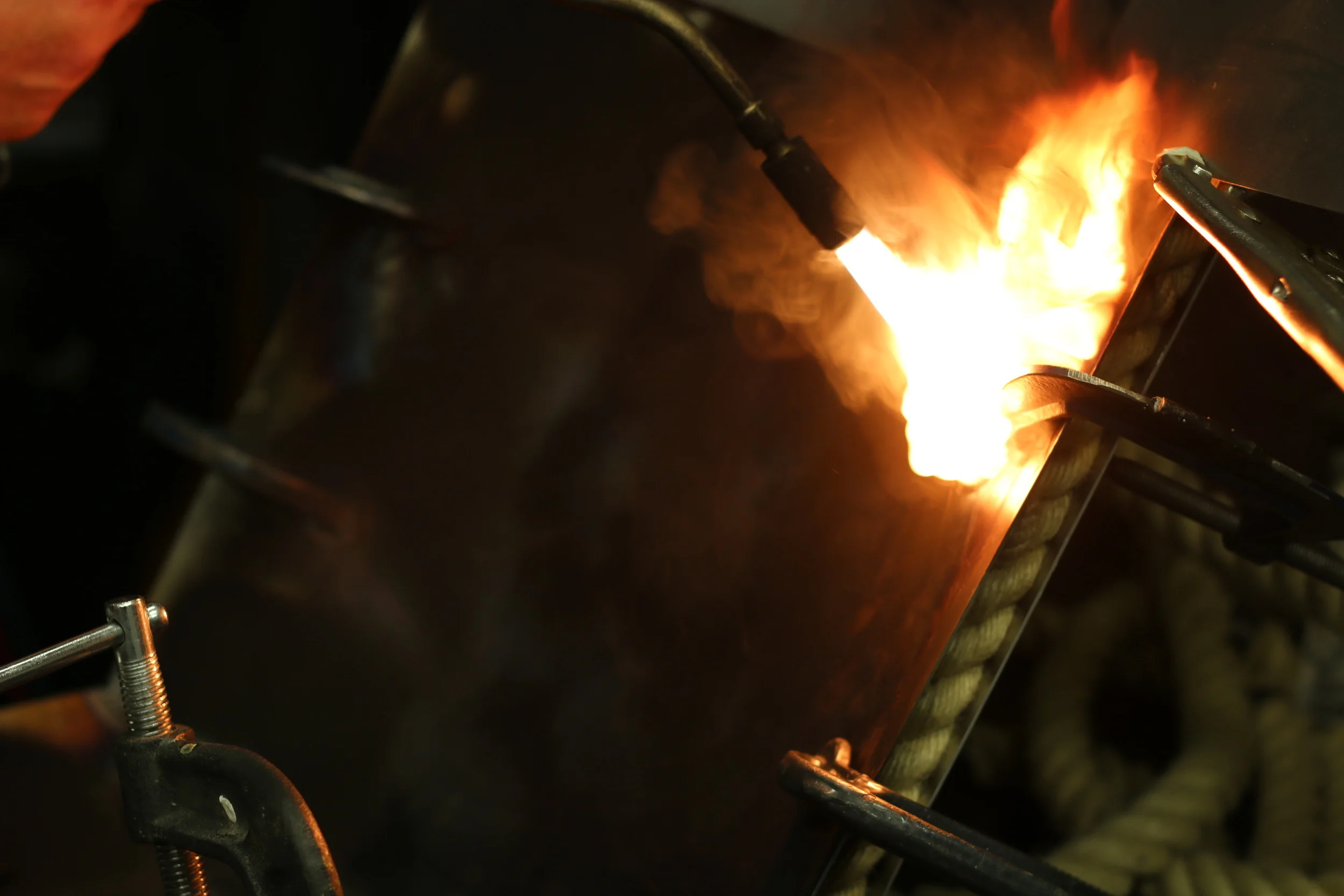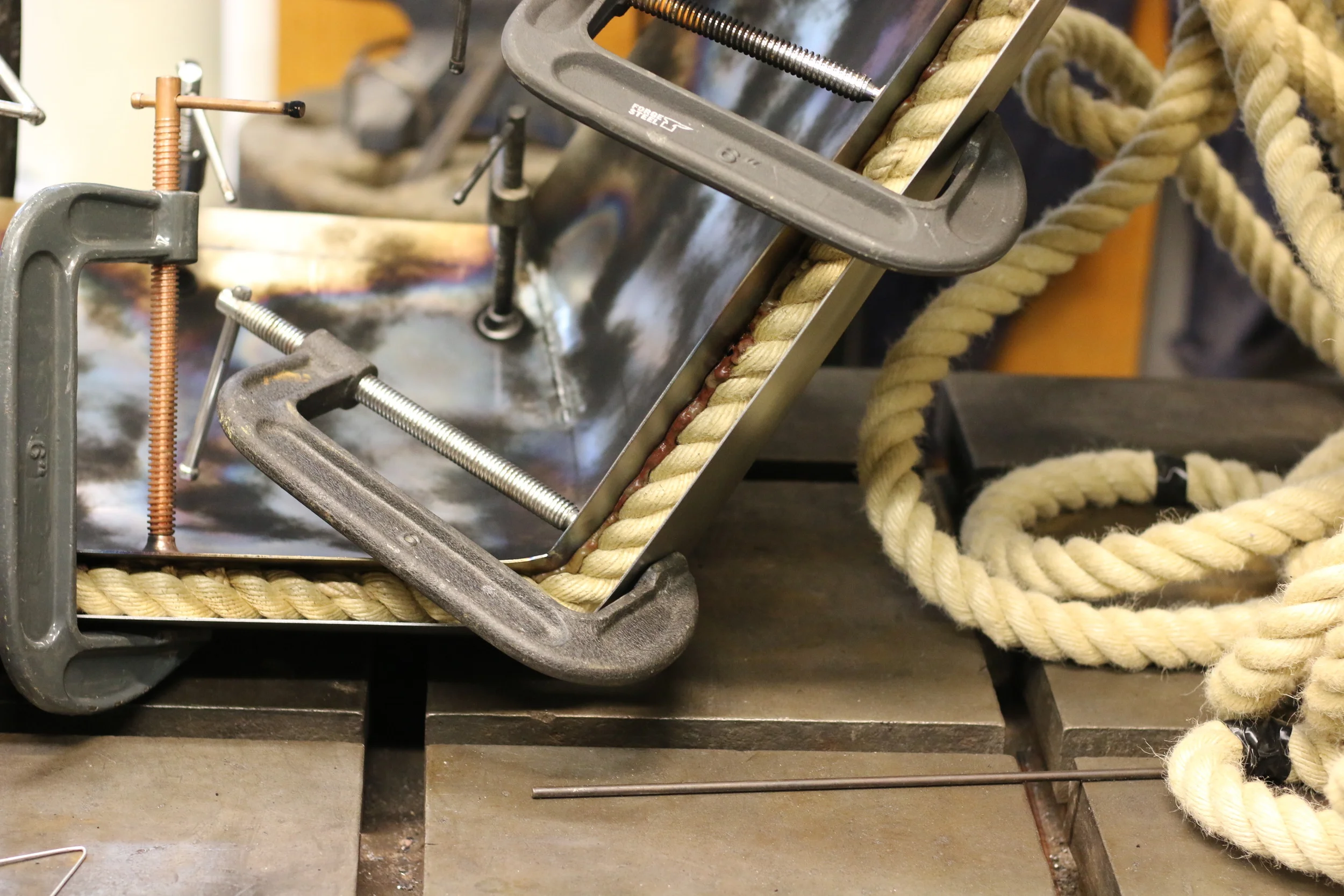PROBLEM
Do we need a shift in culture away from creating products with the typology of imitating natural material to comply with our preference for the natural look?
Can presenting the material in its “raw ‘ form’ or a typology that does not seek to conceal it, raise our awareness and push us as consumers to make a more conscious choice .
Could this affect our awareness of the energy and environmental footprint of our product choices?
INTERVENTION
This chair is called EXPOSED. Its aim is to challenge the authenticity of the material through the process of exposure, by transforming it into a structural form of a plastic chair.
Exhibited in the Gulbenkien gallery.
The chair is built by one single piece of rope, Synthetic hemp that is made of 100% polypropylene fibre. It was formed by burning, with a blowtorch, the rope into a smooth plastic seat. In this process the material transformed its properties completely the their opposite end of the spectrum, i.e. from flexible to rigid/structural, from rough/textured to smooth.
My journey started from wanting to make a chair that would remind the seated person of being at sea and the creaking of ropes. This is how I found myself looking for rope in a nautical shop and discovered Polyhemp or Hempex as it is known.
The irony of this material struck me! With 8 million metric tons of plastic ending up in the world’s oceans, this nautical rope has been dyed to imitate natural hemp, a material praised for its benefits to the environment (no chemical residue, soil enhancement). Yes it is practical because it floats and does not corrode, but why dye it?
So, the motivation of this chair became to expose this fallacy, expose material for what it really is.









